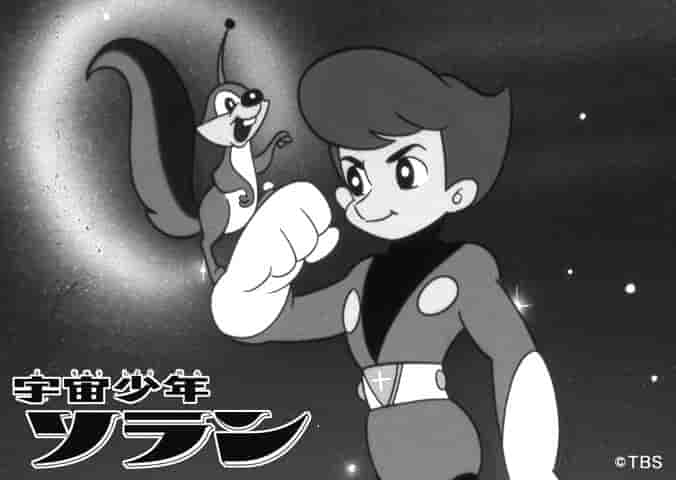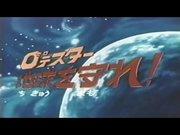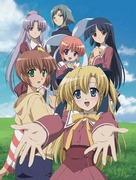The appeal and reviews of "Space Boy Solan": Rediscovering the excitement of space adventure

Space Boy Solan: A timeless tale of adventure and friendship■ Public MediaTV anime series ■ Original MediaAnime Original ■ Broadcast periodMay 4, 1965 - March 28, 1967 Broadcast every Tuesday from 19:00 to 19:30 ■Broadcasting stationTBS Network ■Frequencieshalf an hour ■ Number of EpisodesEpisode 96 ■ DirectorHaruyuki Kawashima ■ ProductionTCJ (now Aiken) ■Works©TBS ■ StoryAfter a spaceship accident, Solan, a baby who was adrift in space in a capsule, was saved by the inhabitants of the planet Solan, which has an advanced civilization. 12 years later, Solan returns to Earth as a cyborg using the science of the planet Solan. His goal is to find his long-lost sister. Solan, who has taken refuge with Professor Kotsuki, searches for his sister with his partner, the space squirrel Chappy, while using his cyborg abilities to confront various evils and solve difficult cases. ■ExplanationBetween 1965 and 1967, Eiken released a series of "sci-fi action anime with boys as the protagonists," including "Super Jetter, the Boy from the Future," "Space Boy Solan," "Planet Boy Papi," and "Planet Mask." All of these works were well received, especially among young viewers, but this one in particular proved extremely popular, airing for about two years and boasting a total of 96 episodes. "Space Boy Solan" is known as a pioneering work that combined science fiction and action in the world of Japanese animation in the 1960s. In particular, the incorporation of the concept of a cyborg into a boy's anime was very innovative at the time and made a strong impression on viewers. In addition, the fact that Solan's purpose in returning to Earth is to find his sister resonates with viewers and adds depth to the story. The success of this series lies not only in its visual appeal, but also in its clever storytelling. The friendship between Solan and Chappie, the family-like bond with Dr. Kotsuki and Mika, and the various difficulties Solan faces and his strength in overcoming them have touched the hearts of viewers. In addition, the battles against evil and the resolution of difficult cases depicted in each episode have been a good opportunity to teach children about justice and courage. Furthermore, the quality of the animation was very high considering the technical standards of the 1960s. The character designs, background art, and the depiction of movement all contributed to drawing the viewer in. In particular, the scenes depicting Solan's cyborg abilities were visually very impactful and stimulated children's imaginations. ■Cast・Soran Tachibana/Yukari Asai (now Yoshiko Asai) The cast should also be mentioned. Asai Yukari (now Asai Yoshiko), who played Solan, captured the hearts of viewers with her exquisite portrayal of Solan's purity and strength. Sugaya Masako, who played Chappie, skillfully portrayed Chappie's cuteness and clumsy side, enhancing his pairing with Solan. Kuwayama Shoichi, who played Professor Kotsuki, conveyed the doctor's knowledge and warmth, giving viewers a sense of security. Matsuo Yoshiko, who played Kotsuki Mika, portrayed Mika's cheerfulness and kindness, deepening the familial bond with Solan and Chappie. Kobayashi Shoji, who played Wyler, showed his presence as the villain and added excitement to the showdown scenes with Solan. ■ Main staff・Original concept, supervision: Kazuya Fukumoto ・Original drawings (manga, character design): Yoshikatsu Miyakoshi ・Composition, direction (chief director): Haruyuki Kawashima ・Chief animation (animation): Shizuko Komooka, Toyoo Ashida, Masae Abiko, Kaoru Morikawa, and others ・Chief art (art director): Hisako Takemura ・Music: Taku Izumi, Kazuo Iba Let's take a closer look at the staff. Kazuya Fukumoto, who was in charge of the original concept and supervision, built the world view of this work and provided viewers with a new experience. Yoshikatsu Miyakoshi, who was in charge of the original drawings and character design, drew characters such as Soran and Chappie in an attractive way, enhancing the visual appeal. Haruyuki Kawashima, who was in charge of composition and direction, skillfully constructed the flow of the story and succeeded in drawing viewers into the story. Shizuko Komooka, Toyoo Ashida, Masae Abiko, and Kaoru Morikawa were in charge of the animation as chiefs, and brought realism to the expression of movement. Hisako Takemura, the art chief, enriched the world view of the story through background art. Izumi Masataka and Kazuo Iba, who were in charge of the music, enhanced the emotions of the viewers through the theme song and background music. ■ Main Characters - Soran Tachibana A cyborg boy who fights evil while searching for his long-lost sister. Let's take a closer look at the main characters. Tachibana Soran is a brave boy who fights evil while also pursuing his goal of finding his long-lost sister. His cyborg abilities were visually very appealing and left a strong impression on viewers. Chappie is a space squirrel who acts as Soran's partner, and although he has a clumsy side, he is an important presence that supports Soran. Dr. Furutsuki is an authority on archaeology and a fatherly figure who supports Soran and Chappie. His knowledge and connections had a great impact on the progression of the story. Furutsuki Mika is Dr. Furutsuki's daughter and a member of the family that lives with Soran and Chappie. Her cheerfulness and kindness added warmth to the story. ■ Theme songs and music・OP Let's also touch on the theme songs. The opening theme, "Space Boy Solan," was written by Yasui Kazumi and Izumi Takusan, composed by Izumi Takusan, and sung by the Kamitakada Boys' Choir. This song left a strong impression on viewers with its powerful melody and lyrics that symbolize Solan's adventure and friendship. The ending theme, "Let's Go Solan," was written and composed by Izumi Takusan, and sung by Yoshida Aya and the Misuzu Children's Choir. This song moved viewers with its gentle melody and lyrics that express Solan's determination and courage. Both songs played an important role in enriching the worldview of the story and eliciting emotions from viewers. ■ Evaluation and recommendation"Space Boy Solan" is regarded as a pioneering work that combined science fiction and action in the world of Japanese animation in the 1960s. In particular, the incorporation of the concept of a cyborg into a boy's anime was extremely innovative at the time and made a strong impression on viewers. In addition, the fact that Solan's purpose in returning to Earth is to find his sister resonates with viewers and adds depth to the story. The success of this series lies not only in its visual appeal, but also in its clever storytelling. The friendship between Solan and Chappie, the family-like bond with Dr. Kotsuki and Mika, and the various difficulties Solan faces and his strength in overcoming them have touched the hearts of viewers. In addition, the battles against evil and the resolution of difficult cases depicted in each episode have been a good opportunity to teach children about justice and courage. Furthermore, the quality of the animation was very high considering the technical standards of the 1960s. The character designs, background art, and the depiction of movement all contributed to drawing the viewer in. In particular, the scenes depicting Solan's cyborg abilities were visually very impactful and stimulated children's imaginations. The series is enjoyable for both children and adults, and has been praised as an anime that the whole family can watch. In particular, the friendship between Solan and Chappie, and the family-like bond with Dr. Kotsuki and Mika, move viewers and provide heartwarming moments. In addition, the various difficulties Solan faces and the strength he shows in overcoming them give viewers courage and hope. The points that make me recommend this series are, first, the friendship between Solan and Chappie. The way the two work together to overcome difficulties is inspiring to the viewer and teaches the importance of friendship. Secondly, Solan's abilities as a cyborg are visually appealing. In particular, the scene where Solan uses his abilities to fight evil leaves a strong impression on the viewer. Thirdly, the family bond with Dr. Kotsuki and Mika is depicted. This makes viewers feel the importance of family bonds and gives them a warm feeling. Fourthly, the fight against evil and the resolution of difficult cases depicted in each episode provide a good opportunity to teach children a sense of justice and courage. Finally, considering the technical standards of the 1960s, the animation quality is very high and visually enjoyable. For these reasons, I highly recommend "Space Boy Solan" as a heartwarming animated film that can be enjoyed by both children and adults. This work, which depicts the adventures, friendship, and family ties of Solan and Chappie, will inspire and inspire viewers, and will be a memorable story. |
<<: Space Ace: A thorough dissection of the futuristic hero legend!
>>: The appeal and reviews of "Alien Pipi": A story woven with unique characters
Recommend
New footage from the live-action Minecraft movie shows how to use a workbench to forge a metal sword
The live-action "Minecraft" movie did n...
The plot of the next live-action Transformers movie Transformers: Rise of the Power Warriors has been revealed
The plot synopsis of the next live-action movie i...
Netflix's suspenseful mystery film "Pale Blue Eyes" first released stills starring Bale
The first stills of the Netflix suspense mystery ...
Koihime Musou: A fusion of history and moe, what is its appeal?
The appeal and reviews of Koihime Musou Introduct...
Detective Conan: The Lost Ship in the Sky - The Appeal and Evaluation of the 14th Movie
Detective Conan: The Lost Ship in the Sky - Movie...
Lady Gaga looks so good in the new set photos of Joker 2
Recently, new set photos of "Joker 2: Big Ps...
Cyborg 009 THE CYBORG SOLDIER Episode 6 Review and Impressions
Cyborg 009 THE CYBORG SOLDIER - Reevaluation and ...
The sequel to Space Battleship Yamato 2205 will be released on February 4, 2022.
The latest theatrical version of "Space Batt...
HBO in talks with Warner Bros. to make Harry Potter series
According to foreign media sources, HBO Max and W...
A thorough analysis of the appeal and realism of "The Way of the Househusband"! A masterpiece anime that perfectly combines the reality of a househusband's life with humor.
"The Way of the Househusband": From Yak...
The appeal and reviews of "Go!Go! Vegetan": An anime experience not to be missed
The appeal and evaluation of "Go! Go! Vegtan...
Don Yakuza Suikoden - In-depth review and recommended points
"Don: Suikoden the Yakuza": A masterpie...
Renowned film music master Ryuichi Sakamoto announced that he had suffered from throat cancer before he was diagnosed with rectal cancer
Japanese composer, music producer, singer, actor ...
Dad Loves Mom: A thorough review of a moving anime masterpiece that depicts family ties and love
"Daddy Loves Mommy" - Looking back on t...
Shimajiro's Appeal and Growth: A Thorough Evaluation of a Masterpiece of Children's Animation
Shimajiro the Striped Tiger: A timeless classic t...









